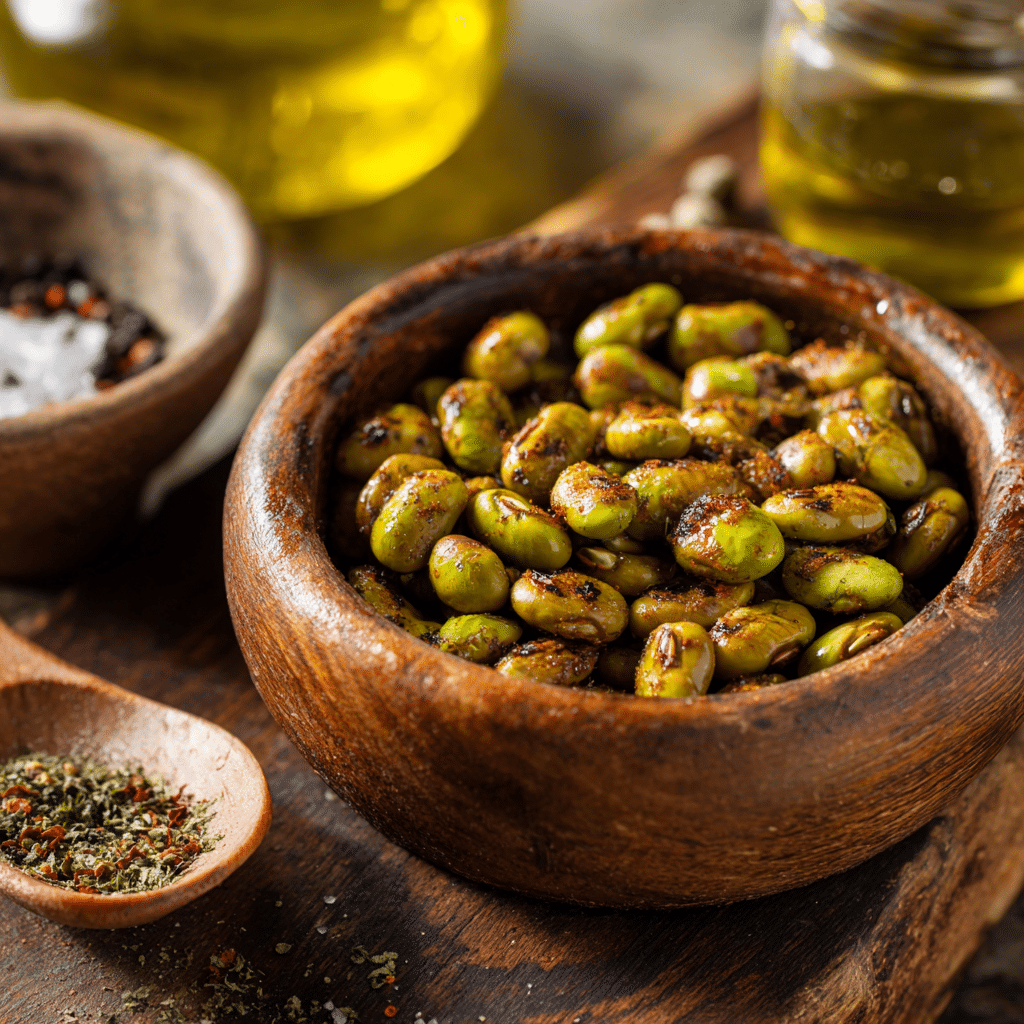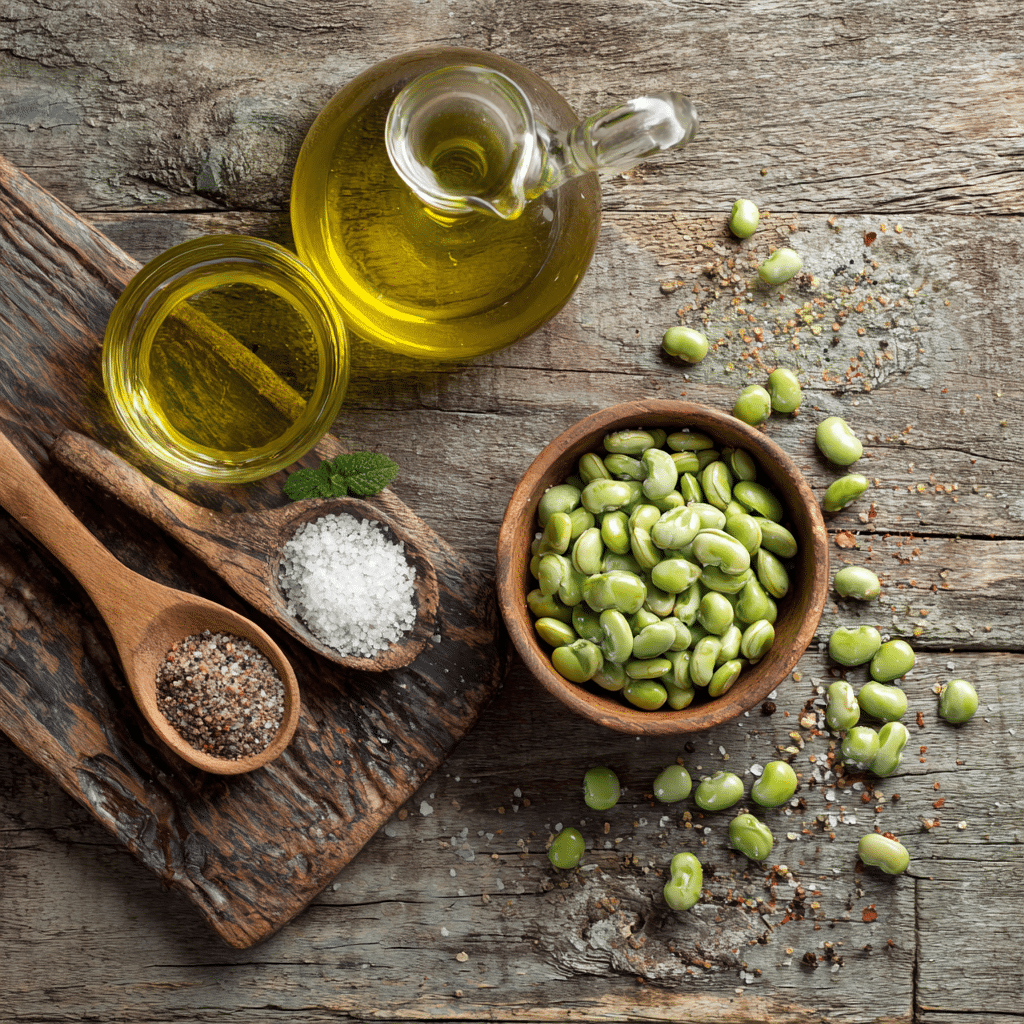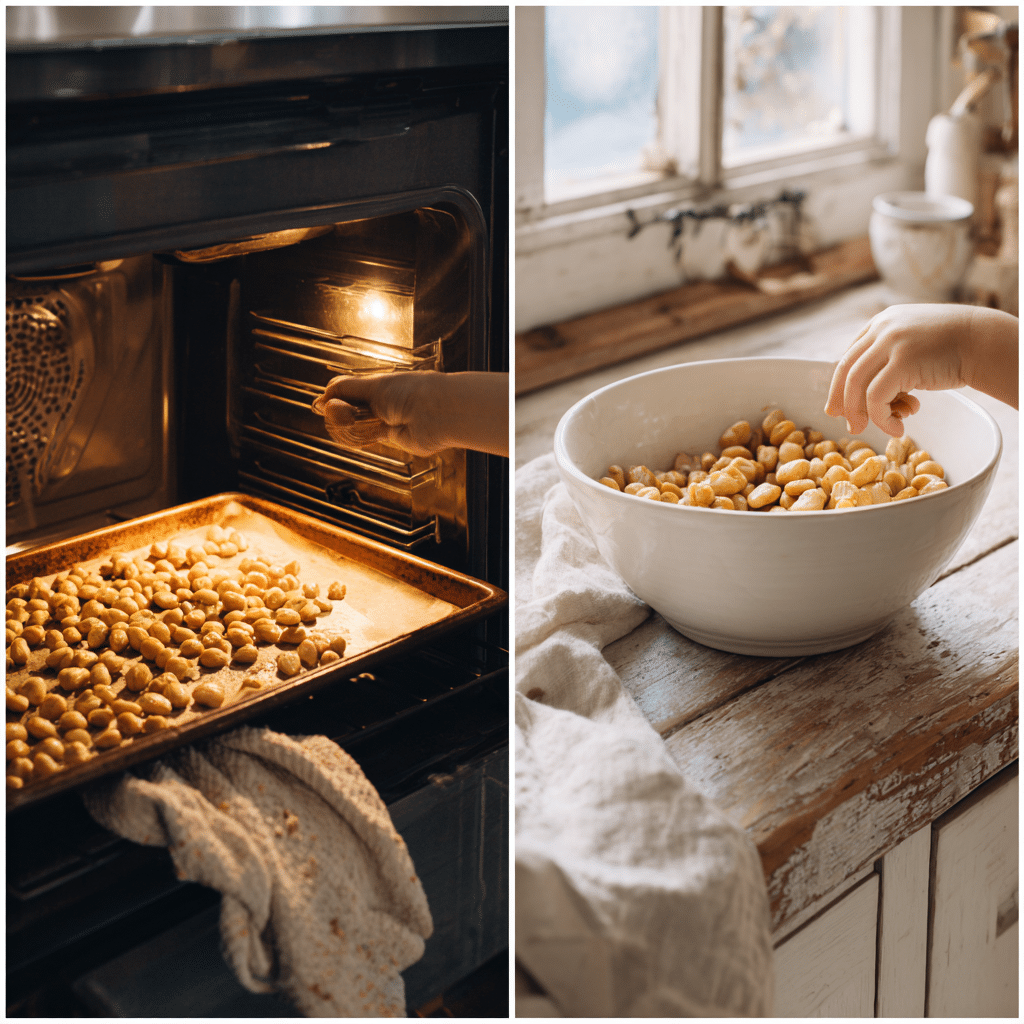
Fava beans seeds are more than just garden staples—they’re a protein-packed gem every plant-based kitchen needs. Whether you’re looking to grow them or roast them into irresistible snacks, these beans deliver both nutrition and flavor. In this article, I’ll share my personal journey with fava beans and a recipe that’s become a family favorite. From tips on selecting seeds to making them deliciously crunchy, you’ll learn how to make fava beans a highlight of your plant-based life. If you’re curious about plant-based protein shakes or want to grow your own beans, you’re in the right place.
Table of Contents
Table of Contents
My Plant-Based Love Story with Fava Beans Seeds
Why My Family Fell in Love with Fava Beans Seeds
When I first embraced veganism in my mid-twenties, one of my biggest challenges was finding snacks that were both high in protein and toddler-approved. That’s when I stumbled across fava beans seeds. I remember browsing our local farmers’ market, a baby on my hip and a grocery list scribbled with “plant-based protein ideas.” The vendor handed me a roasted fava bean sample—warm, salty, and satisfyingly crunchy. That single bite brought me home with two bags of dried seeds and a new obsession.
Back in the kitchen, I experimented. The result? Crispy roasted fava beans that even my picky toddler couldn’t resist. These little bites now show up in lunchboxes, picnic baskets, and even as after-school treats. They’ve become more than a snack—they’re a symbol of how far we’ve come in this plant-based journey.
Turning seeds into memories—and meals
There’s something rewarding about starting with a humble seed and ending with something that nourishes your family. Whether you’re buying dried seeds to cook or planting fava beans in your garden, you’re tapping into their rich history as one of the oldest cultivated legumes. What I love most? These seeds aren’t just tasty—they’re loaded with protein, fiber, and iron, making them ideal for vegan families.
If you enjoy easy, nutrient-packed recipes like my Moroccan spiced lentils or black bean quinoa burgers, you’ll love these roasted fava beans too. They fit right in with other crunchy vegan favorites like crispy lentil bites or spicy chickpea snacks over at banana peanut butter protein balls
Ingredients Image Prompt (MidJourney – place after recipe ingredients):
A flat lay of ingredients on a rustic wooden surface: a small bowl filled with fava beans (bright green), a tiny glass container of olive oil, salt crystals, black pepper grinder, a sprig of rosemary. Natural lighting with shadows, top-down view.
Instructions Image Prompt (MidJourney – place after instructions):
A cozy kitchen scene showing a baking tray of fava beans midway through roasting in a well-lit oven. A hand stirring the beans gently, oven gloves visible, warm golden tones.

Roasted Fava Beans Seeds – Crispy Vegan Snack
Ingredients
Equipment
Method
- Preheat the oven to 180°C/350°F.
- Run warm water over the frozen fava beans in a colander until they reach room temperature.
- Gently squeeze each bean from its pod by pinching the rounded edge.
- Spread the shelled beans on a baking sheet.
- Drizzle olive oil, and sprinkle salt and pepper over them.
- Use your hands to massage seasoning into the beans. Split them where possible for extra crispiness.
- Roast for 40 minutes, stirring halfway through.
- Add 5-minute intervals if needed until they’re golden and crunchy.
Nutrition
Notes
- You can use dried fava beans instead of frozen—just soak them overnight and boil until tender before roasting.
- Customize the seasoning with garlic powder, cumin, paprika, or rosemary for variety.
- Store leftovers in an airtight container for up to 5 days. Re-crisp in the oven if needed.
Tried this recipe?
Let us know how it was!Roasted Fava Beans Recipe
Ingredients
- 325 g frozen broad beans (about 2 cups)
- 1/2 tbsp olive oil
- 1/2 tsp salt
- Grind of black pepper
Instructions
- Preheat the oven to 180°C/350°F.
- Run warm water over the frozen fava beans in a colander until they’re room temperature.
- Gently squeeze each bean to pop it from its pod—it’s easier than it sounds!
- Spread the shelled beans on a baking sheet. Drizzle with olive oil and sprinkle with salt and pepper.
- Massage the seasoning into the beans. Split as many beans as possible for extra crispiness.
- Roast for 40 minutes, stirring halfway through. Add extra time in 5-minute intervals if needed until they’re crunchy.
How to Grow Fava Beans Seeds Successfully
What to Know Before You Plant Fava Beans Seeds

If you’re anything like me, planting your own food feels like magic—especially when it starts with humble seeds. Fava beans seeds are one of the easiest legumes to grow in a home garden, even for beginners. They thrive in cooler seasons, making them perfect for planting in early spring or fall. When I first planted them in our backyard, I wasn’t sure what to expect. But within just a week, tender green shoots poked through the soil, delighting my kids who checked them every morning like a science experiment.
Fava beans take around 75–90 days from seed to harvest. I usually soak mine overnight before planting to speed up germination. The plants grow upright, with sturdy stalks that don’t need staking unless your area gets windy. A bonus? They actually improve your soil by fixing nitrogen, making them a favorite for organic gardening fans.
Conditions and Care for a Bountiful Harvest
Fava beans love full sun and well-drained soil, though they can tolerate partial shade. I always amend my garden bed with compost to give them a nutrient-rich start. Space seeds about 6 inches apart and water consistently, especially during dry spells. Once flowers bloom—usually after 4–6 weeks—pollination begins, and you’ll see pods forming soon after.
For container growers or small urban spaces, you’ll find guides like our container gardening tips and how to start a kitchen garden helpful. They walk you through easy steps to keep your plants thriving in small spaces.
The real joy comes at harvest time, when plump pods are ready to be shelled and roasted, like in my crispy fava beans recipe. Growing them yourself adds a layer of satisfaction that store-bought can’t match.
Unlock the Health Benefits of Fava Beans Seeds
Protein and Fiber That Keep You Full and Strong
When I started shifting to a vegan lifestyle, one of my biggest goals was finding natural sources of protein that didn’t rely on powders or processed food. That’s when I discovered just how powerful fava beans seeds are. Just one cup of cooked fava beans offers around 13 grams of protein and 9 grams of fiber—a nutritional combo that keeps you full, energized, and steady throughout the day.
Fava beans are also rich in iron, magnesium, and folate, which are crucial for energy levels and muscle recovery—especially important when you’re chasing kids, cooking meals, and managing a busy home. I often include roasted fava beans in my girls’ lunchboxes or sprinkle them over warm salads like this lentil spinach power bowl, where they add the perfect crunch and a serious nutrient boost.

Perfect for Vegan, High-Protein Lifestyles
Fava beans seeds aren’t just healthy—they’re versatile. You can blend them into dips, roast them as snacks, or toss them into stews and soups. I even pulse them into protein-packed falafels when I want to switch things up from chickpeas. Their neutral, nutty flavor makes them a great canvas for spices like smoked paprika, cumin, or za’atar.
If you’re building your weekly meal plan, don’t miss our high protein vegan meal prep guide, which pair beautifully with beans like these. Whether you’re looking to balance blood sugar, support your heart, or just keep your family full longer, fava beans seeds deliver all that with a satisfying crunch.
They’ve truly earned a permanent place in our pantry—right next to lentils and quinoa.
Cooking and Storing Fava Beans Seeds Made Easy
How to Cook Fava Beans Seeds the Right Way
Once you’ve bought or harvested your fava beans seeds, the real fun begins—turning them into delicious, protein-packed meals. If you’re working with dried seeds, soaking them overnight helps reduce cooking time and improve texture. I usually simmer mine for 30–45 minutes until tender. From there, the options are endless: mash them into patties, mix into stews, or blend into dips.
My favorite way to cook them, though, is roasting. It’s quick, simple, and turns fava beans into a crispy snack that’s better than chips. You can follow the full roasted recipe above—or head to high protein low calorie vegan recipes for more speedy vegan bites the whole family will love. If you’re batch-cooking for the week, check out our vegan meal prep ideas that feature beans, grains, and greens.
Best Practices for Storing Fava Beans Seeds
Storage makes a huge difference in flavor and freshness. For uncooked fava beans seeds, keep them in an airtight glass jar or container in a cool, dry pantry. Properly stored, they last up to 12 months. If you’ve cooked or roasted them, store leftovers in a sealed container in the fridge for up to 5 days.
Want to freeze them? Go ahead. I often make large batches and freeze half in zip-top bags. Just thaw, reheat, and toss onto bowls, salads, or stir-fries. It’s a lifesaver on busy nights.
When you have great storage habits, you reduce waste and always have something nourishing on hand. That’s the beauty of whole food staples like fava beans seeds—simple to keep, easy to use, and always satisfying.
Conclusion
Whether you’re planting them in your backyard, blending them into dips, or roasting them to golden perfection, fava beans seeds truly deserve a spot in every plant-based kitchen. They’re high in protein, easy to grow, versatile in recipes, and budget-friendly—a rare combination that works beautifully for busy families and wellness-focused eaters alike.
From my very first crunchy bite at the market to sharing fava bean snacks with my daughters, this simple seed has become a quiet hero in our home. It’s more than a snack; it’s a way to nourish, teach, and connect through food.
I hope this guide helps you feel confident planting, cooking, and loving fava beans as much as we do. Whether you’re new to vegan cooking or looking to diversify your plant proteins, let fava beans seeds be the beginning of something nutritious and delicious in your home.
Ready to try more protein-packed plant foods? Check out vegan protein ice cream and more , hearty recipes your whole family will enjoy.
Let’s keep cooking with love—one nourishing seed at a time.
“Follow Recipe Spruce on Pinterest, Facebook, and Instagram for daily high-protein vegan inspiration and easy family meals—fresh ideas in every scroll!”
FAQS
How long do fava beans take to grow from seed?
Fava beans seeds typically take 75 to 90 days to grow from planting to harvest. You’ll see sprouts within 7–14 days after planting, especially if you soak the seeds overnight. Once established, they grow quickly and produce sturdy, upright plants with pods ready to pick in late spring or early fall.
What conditions do fava beans need to grow?
Fava beans seeds grow best in cool weather, full sun, and rich, well-drained soil. They prefer temperatures between 60–70°F and don’t thrive in extreme heat. To get strong plants, plant them early in spring or during fall in milder climates.
Where do fava beans grow best?
They grow best in regions with mild spring or fall seasons. You can plant fava beans seeds directly in garden beds or large containers. Just make sure the soil drains well and gets 6+ hours of sun daily. If you’re in a warmer climate, try a shaded area or plant them in early fall.
How do you care for fava beans?
Once planted, keep the soil moist but not soggy. Water them regularly, especially as pods begin to form. Fertilize with compost at planting, and avoid nitrogen-rich fertilizers—they already fix nitrogen naturally! Keep an eye out for aphids and gently support taller plants if needed.

